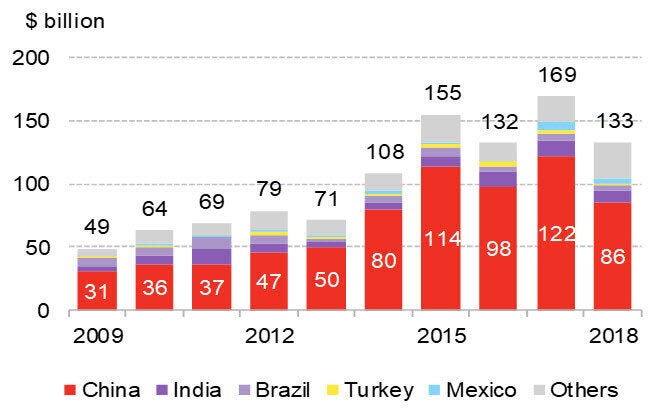1619 Is a Prime Number
One of the appalling creations of the current race/propaganda/marketing gene splicing to crawl out of the Left's thought problem laboratory is the mind-numbing 1619 proposition recently floated by the formerly august NYT.
Here is a portion of a take on it from the New Criterion:
It was to console its core readership that The New York Times undertook The 1619 Project in a special flood-the-zone issue of its Sunday magazine in August and then in a snazzy, graphics-heavy series of features on its website. For two years, the Times had invested heavily in the vaudeville entertainment called “Trump–Russia.” The spectacular failure of its leading man, Special Counsel Robert Mueller, to deliver a happy ending to that fiasco underscored the essential futility of the entire enterprise.
This was something that Dean Baquet, Executive Editor of the Times, grasped instantly. Last summer, he huddled with his staff in a town-hall-style meeting—the proceedings of which were promptly leaked—and acknowledged a sad truth: “We built our newsroom to cover one story” (the now-debunked story that Donald Trump had “colluded” with Russia to steal the 2016 election). The story didn’t pan out. “Now we have to regroup,” Baquet told the assembled troops, “and shift resources and emphasis to take on a different story.” What story? Henceforth, or at least “for the next two years”—the remainder of Trump’s first term—the Times was going all in on “race, and other divisions.” Robert Mueller couldn’t get Trump. Maybe the Times could by writing about race in a “thoughtful,” i.e., obsessive and one-sided, way—“something,” Baquet added “we haven’t done in a large way in a long time.”
a major initiative from The New York Times observing the 400th anniversary of the beginning of American slavery. It aims to reframe the country’s history, understanding 1619 as our true founding, and placing the consequences of slavery and the contributions of black Americans at the very center of the story we tell ourselves about who we are.
What followed was a stupefying race-based fantasy about the origins of the United States. The lead essay, by the black journalist Nikole Hannah-Jones, the “architect” of The 1619 Project, set the tone. “[O]ne of the primary reasons the colonists decided to declare their independence from Britain,” she wrote, “was because they wanted to protect the institution of slavery.” So, everything you learned about the American Revolution is wrong, or at least wrongheaded. Forget about the Stamp Act, the, Boston Tea Party, the Intolerable Acts, “No taxation without representation,” etc. All that, utterly unmentioned by Ms. Hannah-Jones, was mere window dressing. The American colonists might talk about liberty. What they really cared about, according to this malignant fairy tale, was preserving and extending the institution of slavery. “[S]ome might argue,” as Hannah-Jones coyly puts it, “that this nation was founded not as a democracy but as a slavocracy.” Gosh. Of course, “some might argue” any number of incredible things: that the earth is flat, that the moon is made of green cheese, that The New York Times is still a responsible source of news and even-handed commentary. The fact that “some might argue” X does not mean that X is credible.
Presumably, however, neither Hannah-Jones nor the Times intends for us to take the metaphor quite so seriously. For Hannah-Jones, what is wanted is an expression that simultaneously justifies the endless whining of black radicals about how victimized they are because of things that happened a few centuries ago while also stressing the perpetually renewable guilt (like the liver of Prometheus) of whites, all whites, those living today even more than those actually involved in the African slave trade in the seventeenth, eighteenth, or nineteenth centuries. For the Times, it fits in with what Power Line’s Paul Mirengoff called its “irresistible urge to delegitimize America.” That is the ultimate aim of The 1619 Project: to deliver another blow in the campaign to besmirch and diminish the political and moral achievement that is the United States of America. It is as despicable as it is mendacious.
This is true. Nevertheless, the paper is not entirely without influence, even today. Indeed, various public school districts, including some in Chicago, have announced that they will supplement their curricula by distributing copies of The 1619 Project to students, thereby promulgating the racialist worldview expounded by that “major” “reframing” of our history. And though the copies will be paid for by the Times and donors, taxpayers will still be indirectly funding a version of history that is politically tendentious and wildly at odds with the facts. The Pulitzer Center (not affiliated with the famed prizes) has announced that it “is proud to be the education partner for The 1619 Project.” As we write, the Center’s website is full of little valentines to Hannah-Jones and her racialist, ahistorical fantasy about the founding of the United States.
We said that The 1619 Project was stupefying. What we meant was that the claims it makes are so outlandish, at once so ostentatiously at odds with historical reality while also being carefully framed in a corset of politically correct verbiage, that any critical response is at first stunned. Someone tells you that the Apollo 11 moon landing was a carefully staged hoax perpetrated by nasa or the Trilateral Commission or whatever. Your first response is a spluttering incredulity.
It is the same with the contention that 1619, the year that the first African slaves were brought to America, marked “the beginning of the system of slavery on which the country was built.” But there were already slaves and various other forms of indentured labor in the Americas as there were all over the world. To say that there were slaves in America is not to say that “the country was built” on slavery. Moreover, the African slaves were not “kidnapped” by American or British slavers, as Hannah-Jones asserts, but were sold by other black Africans who were happy to profit by selling people they had enslaved to the colonists.
The distinguished historian Allen C. Guelzo, writing in City Journal, notes that “The 1619 Project is not history: it is polemic, born in the imaginations of those whose primary target is capitalism itself and who hope to tarnish capitalism by associating it with slavery.” The great irony, Guelzo writes, is that “The 1619 Project dispenses this malediction from the chair of ultimate cultural privilege in America,” The New York Times, “because in no human society has an enslaved people suddenly found itself vaulted into positions of such privilege, and with the consent—even the approbation—of those who were once the enslavers.”
(A prime number is one whose only function is 1 and itself, that is it is not the product of any two numbers other than one and itself. It is isolated, autogenerated and alone.)













